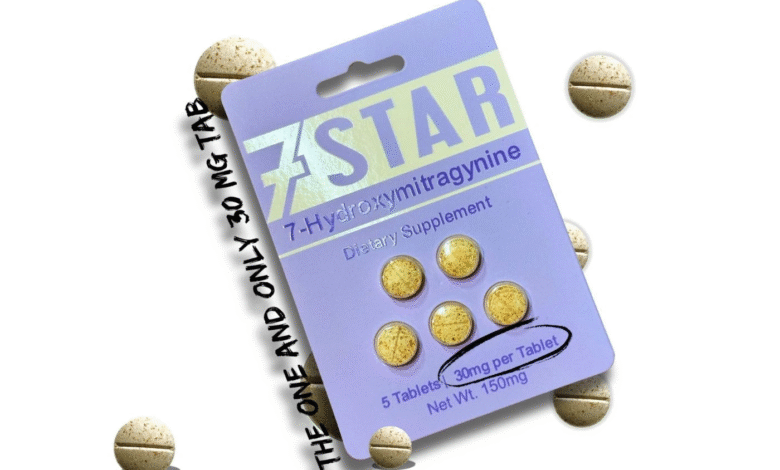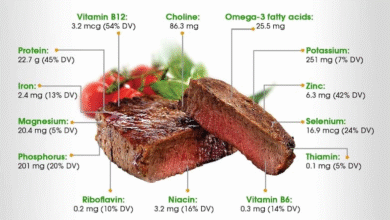7-Hydroxymitragynine: A Rising Concern in the Opioid Epidemic

7-hydroxymitragynine, commonly referred to as 7-OH, is a potent compound derived from the kratom plant, widely known for its increasing presence in the market as a controversial substance likened to “gas station heroin.” As health officials grapple with the implications of the opioid epidemic, the FDA is advocating for strict regulation of 7-OH, given its potential for addiction and abuse. This semi-synthetic opioid, which has garnered attention for its ability to bind effectively to opioid receptors, poses significant health risks, especially to younger populations. Lawmakers and health experts, including HHS Secretary Robert F. Kennedy Jr., have voiced concerns that unregulated access to 7-OH in products like flavored gummies may lead to yet another wave of addiction across the nation. With parallels drawn to the early days of opioid prescriptions, the urgency to address the health risks of 7-OH is more critical than ever.
Often termed as a rising threat to public health, 7-hydroxymitragynine is increasingly being labeled as a substance that could ignite a new crisis reminiscent of the opioid epidemic. Also known as 7-OH, this compound emerges from the kratom plant and is touted for its analgesic effects, yet it carries with it severe risks of dependency and health complications. The FDA’s push for kratom regulation highlights its status in the landscape of drug addiction, where products containing 7-OH are marketed aggressively, sometimes in misleading ways that appeal to vulnerable audiences. Dubbed “gas station heroin” due to its accessibility, this substance exemplifies the challenges of regulating new psychoactive substances, particularly in a landscape still grappling with the aftermath of opioid misuse. Understanding the potential dangers of 7-OH and its addictive properties is paramount as discussions around drug regulation continue.
Understanding 7-Hydroxymitragynine: The New Face of Addiction
7-hydroxymitragynine, commonly known as 7-OH, is gaining notoriety as a substance that health officials are now equating with the dangers of opioids like heroin. As a natural alkaloid derived from the kratom plant, 7-OH has the capacity to bind to opioid receptors in the brain, mimicking the effects of traditional opioids. This rising popularity among younger people, often marketed in enticing forms such as gummies and flavored drinks, has raised alarm bells among health officials. They warn that such accessibility could lead to a new wave of addiction, echoing the early days of the opioid epidemic when substances were readily prescribed without a full understanding of their potential for dependency.
The FDA has responded to this alarming trend by recommending that 7-OH be classified as a Schedule I controlled substance. This move aims to regulate the distribution of this potent compound, which has shown to be even more powerful than morphine in some cases. The comparison to “gas station heroin” highlights the urgent need for public education on the dangers associated with this substance, especially considering that many consumers mistakenly perceive kratom and its derivatives as safe alternatives to conventional pain relief.
Frequently Asked Questions
What is 7-hydroxymitragynine and why is it referred to as ‘gas station heroin’?
7-hydroxymitragynine (7-OH) is a potent byproduct of the kratom plant, increasingly referred to as ‘gas station heroin’ due to its accessibility and opioid-like effects. It binds to opioid receptors, making it a substance of concern in the ongoing opioid epidemic.
What are the health risks associated with 7-hydroxymitragynine (7-OH)?
The health risks of 7-hydroxymitragynine include potential addiction, overdose, and adverse effects similar to those of traditional opioids. As a semisynthetic opioid, it can lead to dangerous health outcomes, especially when misused or consumed in unregulated products.
Why is the FDA considering regulating 7-hydroxymitragynine as a controlled substance?
The FDA is considering regulating 7-hydroxymitragynine due to its high potential for abuse and the risks it poses, particularly to youth. By labeling it as a Schedule I drug, the intent is to prevent another wave of addiction akin to the earlier phases of the opioid crisis.
How does 7-hydroxymitragynine (7-OH) relate to the opioid epidemic?
7-hydroxymitragynine is closely linked to the opioid epidemic as it has potent effects on opioid receptors, similar to classic opioids. Its growing availability, sold in easily accessible forms like gummies, raises concerns about its role in fostering addiction during a crucial point in public health.
What impact could 7-OH have on young people, according to health officials?
Health officials warn that 7-hydroxymitragynine presents significant risks to young people, as its availability in flavored products can appeal to minors. This presents an alarming potential for early initiation into substance use and subsequent addiction.
Is 7-hydroxymitragynine (7-OH) currently considered a safe dietary supplement?
No, there are currently no approved drugs or dietary supplements containing 7-hydroxymitragynine. The FDA has warned that products claiming to contain 7-OH may not be accurately labeled, increasing the risk of unregulated use.
What steps are being taken to combat the spread of 7-hydroxymitragynine products?
To combat the spread of 7-hydroxymitragynine, the FDA has issued warning letters to companies illegally marketing these harmful products. They emphasize the need for public education and regulatory measures to prevent the normalization of substances that can lead to addiction.
Can 7-hydroxymitragynine (7-OH) lead to addiction?
Yes, 7-hydroxymitragynine has the potential to cause addiction similar to traditional opioids. The binding of 7-OH to opioid receptors triggers addiction pathways in the brain, raising significant concerns among health officials about its misuse.
What is the relationship between 7-hydroxymitragynine and kratom?
7-hydroxymitragynine is a compound derived from the kratom plant, which is often used for its stimulant properties. However, unlike kratom, 7-OH is more potent and poses higher risks for addiction and other health issues.
How might the regulation of 7-hydroxymitragynine affect public health?
Regulating 7-hydroxymitragynine is expected to enhance public health by reducing its availability, educating the public about its risks, and ultimately preventing potential addiction waves that could exacerbate the current opioid crisis.
| Key Point | Details |
|---|---|
| Substance Classification | 7-hydroxymitragynine (7-OH) is recommended to be classified as a Schedule I drug by the FDA. |
| Health Risks | 7-OH is compared to opioids, being potentially more potent than morphine and has significant addiction potential. |
| Public Health Action | Health Officials are taking action, warning against illegal marketing of 7-OH products. |
| Product Availability | 7-OH products are prevalent in the market, especially in appealing forms for youth, like gummies and flavored products. |
| Personal Experiences | Key figures, including HHS Secretary RFK Jr., share personal ties to addiction, stressing urgency in addressing the issue. |
| Statistics on Drug Overdose | The CDC reported a decrease in drug overdose deaths, indicating improved public health but highlighting ongoing risks from substances like 7-OH. |
Summary
7-hydroxymitragynine, often dubbed “gas station heroin,” poses significant health risks due to its strong opioid properties and potential for addiction. The FDA’s recent recommendation underscores a proactive approach to prevent the escalation of abuse similar to previous opioid crises. With its increasing availability and appealing forms, especially to younger audiences, immediate regulatory and educational measures are essential in curbing this public health threat.




